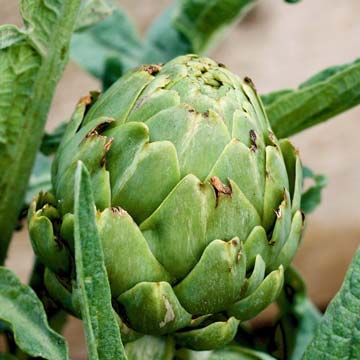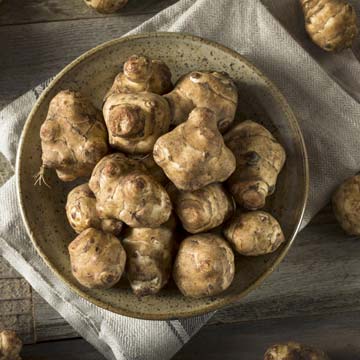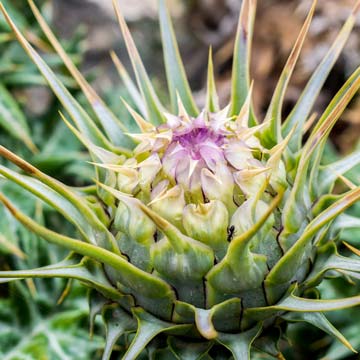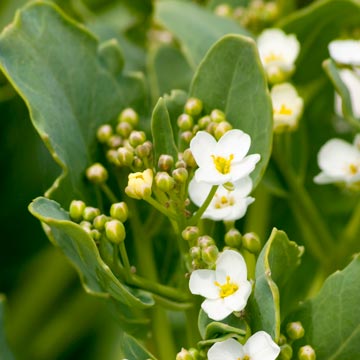 Asparagus spears that aren’t cut in spring grow into 3-foot-tall stalks that grow ferny foliage.
Asparagus spears that aren’t cut in spring grow into 3-foot-tall stalks that grow ferny foliage.
iStock/Thinkstock
Vegetable gardens are usually filled with annual crops – plants such as tomatoes, peppers and cucumbers that are planted each spring, harvested in summer or fall, then replanted the next year.
However, some edibles come back year after year from their own roots. In other words, they’re perennial vegetables.
 Rhubarb leaves are toxic, only the stalks are edible.
Rhubarb leaves are toxic, only the stalks are edible.
iStock/Thinkstock
These are in addition to other perennial edibles, such as fruit trees and bushes (apples, blueberries, strawberries, cherries, etc.) and winter-hardy herbs that come back year after year in most of the United States (sage, chives, oregano, thyme, etc.)
Perennial vegetables save replanting work each year and are less expensive in the long run by yielding food for years from a one-time purchase. Most of them are good-looking enough that they can be tucked into existing landscape beds. Try these seven for starters:
 Globe artichokes produce large, edible flower buds at the top of its flower stalks.
Globe artichokes produce large, edible flower buds at the top of its flower stalks.
Pixabay
- Asparagus. The best known of the perennial vegetables, asparagus is usually planted by purchased roots in sunny, well drained beds. Harvest lightly in the second year, then cut spears for six weeks each spring for 10 or more years. Uncut spears grow about 3 feet tall and produce ferny tops that make a wispy hedge.
- Rhubarb. Plants produce wide, celery-like stalks of shiny green or red and large dark-green leaves that give a striking, tropical look. Harvest stalks for weeks each spring for pies or sauces. Don’t eat the leaves, though. They’re toxic due to high levels of oxalic acid.
- Globe artichokes. Perennial in Zones 7 and warmer, globe artichokes produce serrated-sword-like leaves and stalks that grow pineapple-like cones at the top. The cones are actually flower buds that peel back to give access to the tender heart inside. Quick-maturing types can be grown as fall-harvested annuals in cooler climates.
- Sunchokes. Also known as Jerusalem artichokes, sunchokes are U.S. native plants with nutty-flavored underground tubers that are harvested in fall. They can be eaten raw or cooked like a root vegetable. They’re perennial in Zones 3 through 8.
 Also called "Jerusalem artichokes", sunchokes are perennials in Zones 3 through 8.
Also called "Jerusalem artichokes", sunchokes are perennials in Zones 3 through 8.
iStock/Thinkstock
- Cardoon. A cousin to the globe artichoke, cardoon is a bushy plant with silver serrated-sword leaves. It’s attractive enough that it’s often grown as an ornamental rather than an edible. The artichoke-flavored stems are the edible part. Plants grow 4 feet tall or more and are perennial in Zones 7 and warmer.
 Sometimes grown as an ornamental, cardoon’s artichoke-flavored stems are edible.
Sometimes grown as an ornamental, cardoon’s artichoke-flavored stems are edible.
Pixabay
- Ramps. A U.S. native onion-family plant sometimes called “wild leeks,” ramps have narrow, bladed leaves that can be eaten as greens and small bulbs that can be used like onions or garlic. Plants are best harvested in spring. They’re perennials in Zones 4 through 8.
 Ramp leaves and bulbs are edible.
Ramp leaves and bulbs are edible.
iStock/Thinkstock
- Sea kale. This cabbage-family plant grows about 2 feet tall and has ruffled, bluish-green leaves somewhat similar to kale. The leaves, shoots and broccoli-like flower heads are all edible. Plants are perennial in Zones 4 through 9.
 Sea kale develops broccoli-like flowers, which along with the leaves and shoots are edible.
Sea kale develops broccoli-like flowers, which along with the leaves and shoots are edible.
iStock/Thinkstock
Maximize performance of the above perennial vegetables by fertilizing in early spring, early summer and early fall.